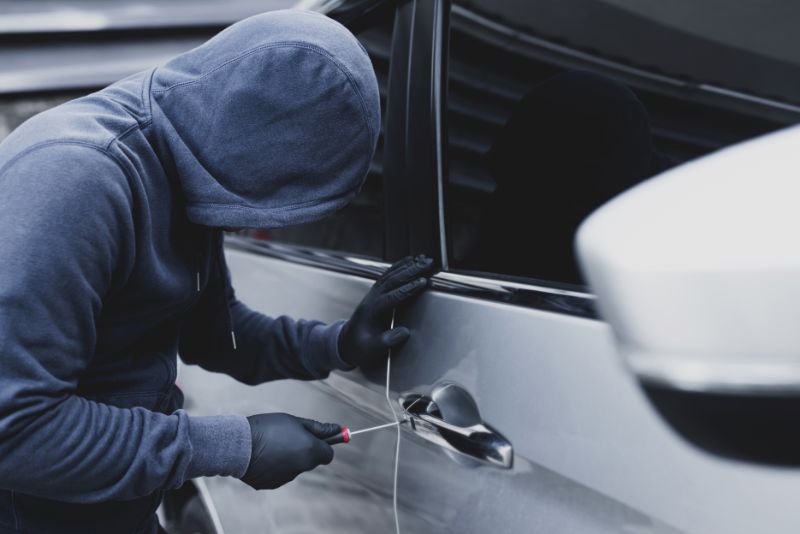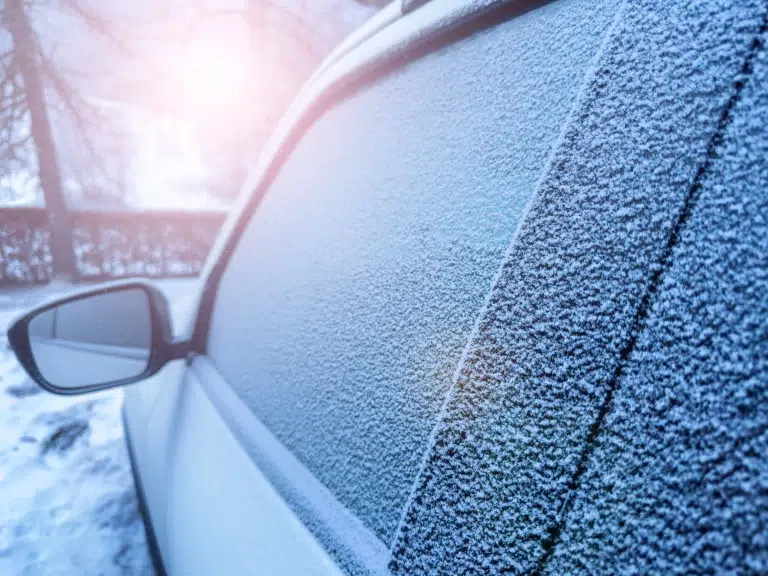Winter has well and truly brought a cold blast, with sub-zero temperatures! And, while you’re probably thinking about all the ways of keeping your home safe and warm, have you thought about how you’ll protect any vehicles you may have?
Ensuring your car, van, motorbike, or even your caravan is safe, secure and in full working order during the colder seasons is important. You’ll want to know that they’ll keep running smoothly, that you’re prepared in case of an emergency, and that it’s as protected as possible from wrong doers.
Let’s explore some top winter vehicle maintenance advice, plus what you can do to ensure your vehicle is secure.
Car maintenance tips for colder months
- Headlights – don’t be a one-eyed monster! Make sure all your headlights and brake lights are all working. In bad weather, even in the daylight, visibility can be limited. Get a partner or friend to help you check or shine your lights onto a wall and watch for the illumination.
- Windscreen – take time to defrost your vehicle properly before setting off, so that your windscreen is completely clear. Test your wipers and carry extra screen wash with you in case you run out mid-journey. If you spot any chips or cracks, get them seen to ASAP, because the cold can make them worse.
- Tyre tread and pressure – in cold weather, your tyre pressure can drop quickly, leading to premature wear on your tyres, and even reducing your ability to grip the road properly! Check the pressure regularly and keep an eye on the tread too. The minimum legal tread depth is 1.6mm, the AA recommends at least 2mm and preferably 3mm in winter conditions. This will dramatically improve your ability to steer and brake safely.
- Battery – Car batteries last around 3-5 years but are a common cause of breakdowns. In cold weather, under the demands of lights, heating, and wipers, your battery can take a battering. Cold weather makes the engine harder to turn over and reduces the amount of energy your car battery produces. If you are struggling to start the engine, turn off all these extras before trying again.
What to pack for an emergency kit
Having an emergency pack to keep in your car or van can save your bacon if you find your journey goes off track! If you break down on the motorway, or anywhere that you need to leave the vehicle and head for a safe location, your emergency pack should be ready to grab and go. Useful items include:
- Warm winter clothing (coat, fleece, hat, gloves)
- Blanket
- High visibility jacket
- Torch including spare batteries
- Ice scraper and de-icer
- Extra screen wash
- First aid kit
- Spare phone charger
- Bottle(s) of water
- Hazard sign
- Emergency contact information needed to call for assistance
Other suggestions include non-perishable snacks for emergencies, safety goggles, jump starter power packs just in case another vehicle isn’t around, a snow shovel, umbrella, shoe grips to wear in icy conditions and even cat litter to help you escape an icy trap. All great ideas, depending on your boot space, of course!
Is your vehicle secure?

It’s well documented that car and vehicle thefts tend to increase during winter, so here’s some tips for keeping your property safe.
Preventing motorcycle theft
Motorcycles are a popular target for criminals, as they can be easy to access as the parts sell for a lot of money. To keep your motorcycle safe, you should:
- Store it out of sight, either in a shed or garage. If you don’t have a garage, you can purchase a small shed or motorcycle locker for your back garden.
- Cover your bike. Typically, a motorcycle thief is looking to sell your bike’s components, and wants the best, most valuable model. Covering your bike means you aren’t advertising your bike, reducing the appeal to thieves. It will also keep your bike protected from the elements.
- Always park in a well-lit, open area, ideally in the line of sight of CCTV cameras. This should not only deter thieves but ensure any attempts to steal your bike are caught on camera.
- Remove the keys from the ignition every time you leave the bike – regardless of whether you’re popping back into your house or into a shop.
- Use multiple secure locks, for added layers of protection.
- Install an immobiliser and alarm, as a last line of defence. The immobiliser will stop your bike engine from starting without the key, and if that doesn’t work, then a loud alarm will attract attention to a thief trying to steal your bike.
- Attach a tracking device to your bike, in case it does get stolen, to help you track it down. A professional tracker shows insurance providers that even though your bike may get stolen, the chance of recovering it is increased. This reduces the risk of a payout on their end which can lower your premiums.
- Tag your bike’s components, so that if your bike is stolen and gets broken down into parts, they can be traced back to you with a unique electronic ‘fingerprint’.
- Register your motorcycle on an SBD-approved, secure national database. These registers help police identify the rightful owner of a motorbike and can even flag stolen bikes to the authorities.
For even more motorbike security advice, and how your insurance premiums could be affected, read our full guide here.
Preventing car theft
There are also steps you can take to reduce the risk of your car being stolen or broken into.
- Don’t leave your car unattended, even if you’re waiting for it to defrost. An opportunist could steal your car, and this kind of theft could invalidate your car insurance policy.
- Take any and all valuable or attractive items out your car, so they’re not in view. This includes loose change, bank cards, Sat Navs, and any cables or mounting brackets.
- Be careful where you park. The safest spot is a private garage, and following that, private or public car parks, where CCTV is prominent. Always try to park in well-lit areas, with high levels of footfall.
- Old-school protection, such as a steering wheel lock or wheel clamp, makes for a visible, and effective deterrent.
- Always double-check your car is properly locked. Thieves can use jammers to prevent your car from locking itself, so always test the door handle after clicking your key fob.
Protecting your caravan from theft
Caravans are seen as high value items for thieves. During the off-season, it can be easy for your caravan, campervan or other leisure vehicle to fall down the priority list. But it’s important to deter potential thieves as much as you can.
- Mark your caravan, and fit deterrents such as hitch locks, wheel clamps and deadlocks.
- Don’t leave any valuables inside your caravan, including any registration documents that could make it easier for thieves to sell on.
- Close and lock each door and window securely.
- Install a tracker, or if your caravan is second-hand, check if one is already fitted. This should increase your chance of locating your vehicle if it is taken.
- Pick a secure location, if you’re storing your caravan away from home for the season. Don’t be lured in by a low price and sacrifice proper security measures.
Sources: Practical Caravan

